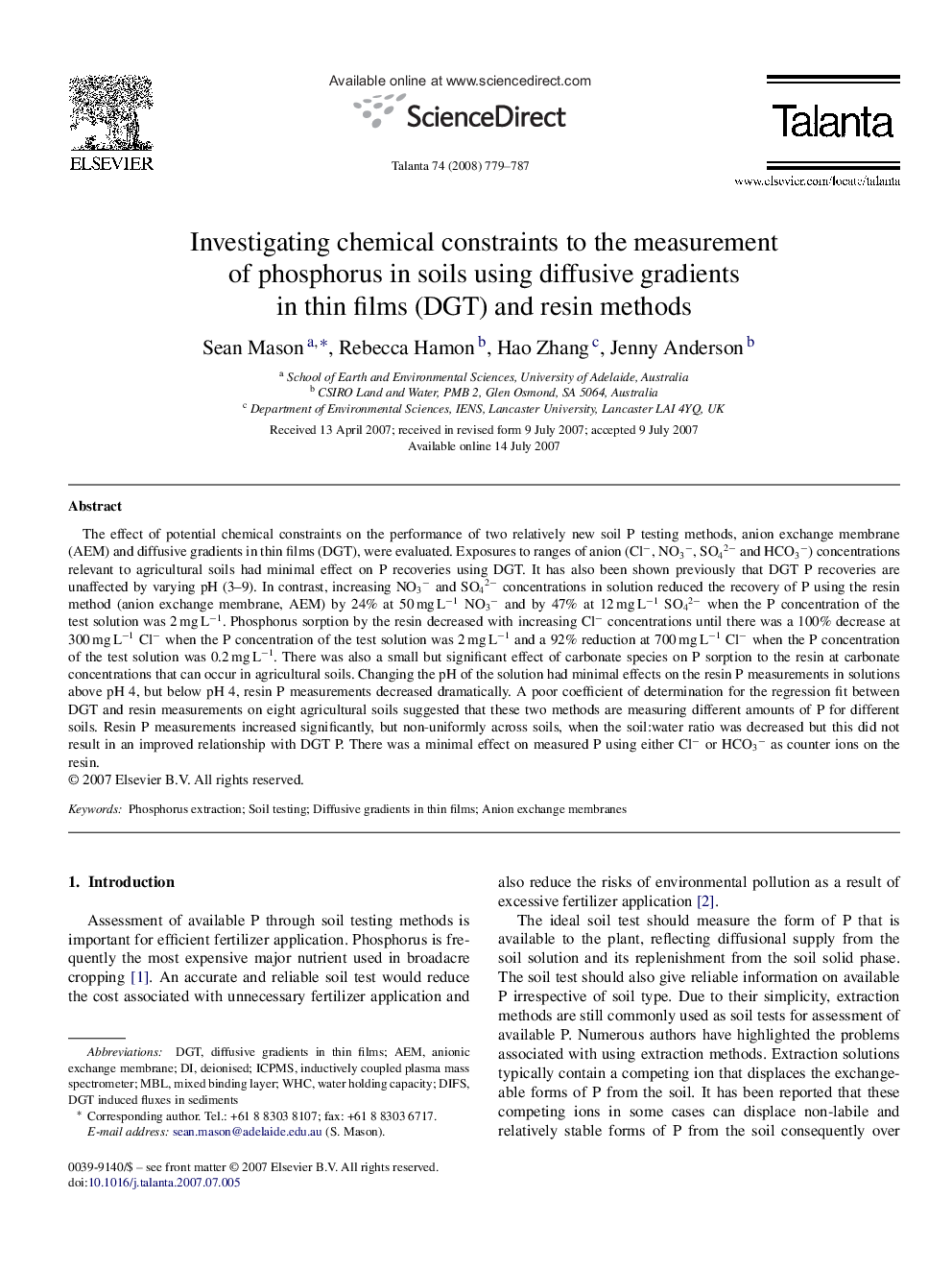| Article ID | Journal | Published Year | Pages | File Type |
|---|---|---|---|---|
| 1247117 | Talanta | 2008 | 9 Pages |
The effect of potential chemical constraints on the performance of two relatively new soil P testing methods, anion exchange membrane (AEM) and diffusive gradients in thin films (DGT), were evaluated. Exposures to ranges of anion (Cl−, NO3−, SO42− and HCO3−) concentrations relevant to agricultural soils had minimal effect on P recoveries using DGT. It has also been shown previously that DGT P recoveries are unaffected by varying pH (3–9). In contrast, increasing NO3− and SO42− concentrations in solution reduced the recovery of P using the resin method (anion exchange membrane, AEM) by 24% at 50 mg L−1 NO3− and by 47% at 12 mg L−1 SO42− when the P concentration of the test solution was 2 mg L−1. Phosphorus sorption by the resin decreased with increasing Cl− concentrations until there was a 100% decrease at 300 mg L−1 Cl− when the P concentration of the test solution was 2 mg L−1 and a 92% reduction at 700 mg L−1 Cl− when the P concentration of the test solution was 0.2 mg L−1. There was also a small but significant effect of carbonate species on P sorption to the resin at carbonate concentrations that can occur in agricultural soils. Changing the pH of the solution had minimal effects on the resin P measurements in solutions above pH 4, but below pH 4, resin P measurements decreased dramatically. A poor coefficient of determination for the regression fit between DGT and resin measurements on eight agricultural soils suggested that these two methods are measuring different amounts of P for different soils. Resin P measurements increased significantly, but non-uniformly across soils, when the soil:water ratio was decreased but this did not result in an improved relationship with DGT P. There was a minimal effect on measured P using either Cl− or HCO3− as counter ions on the resin.
